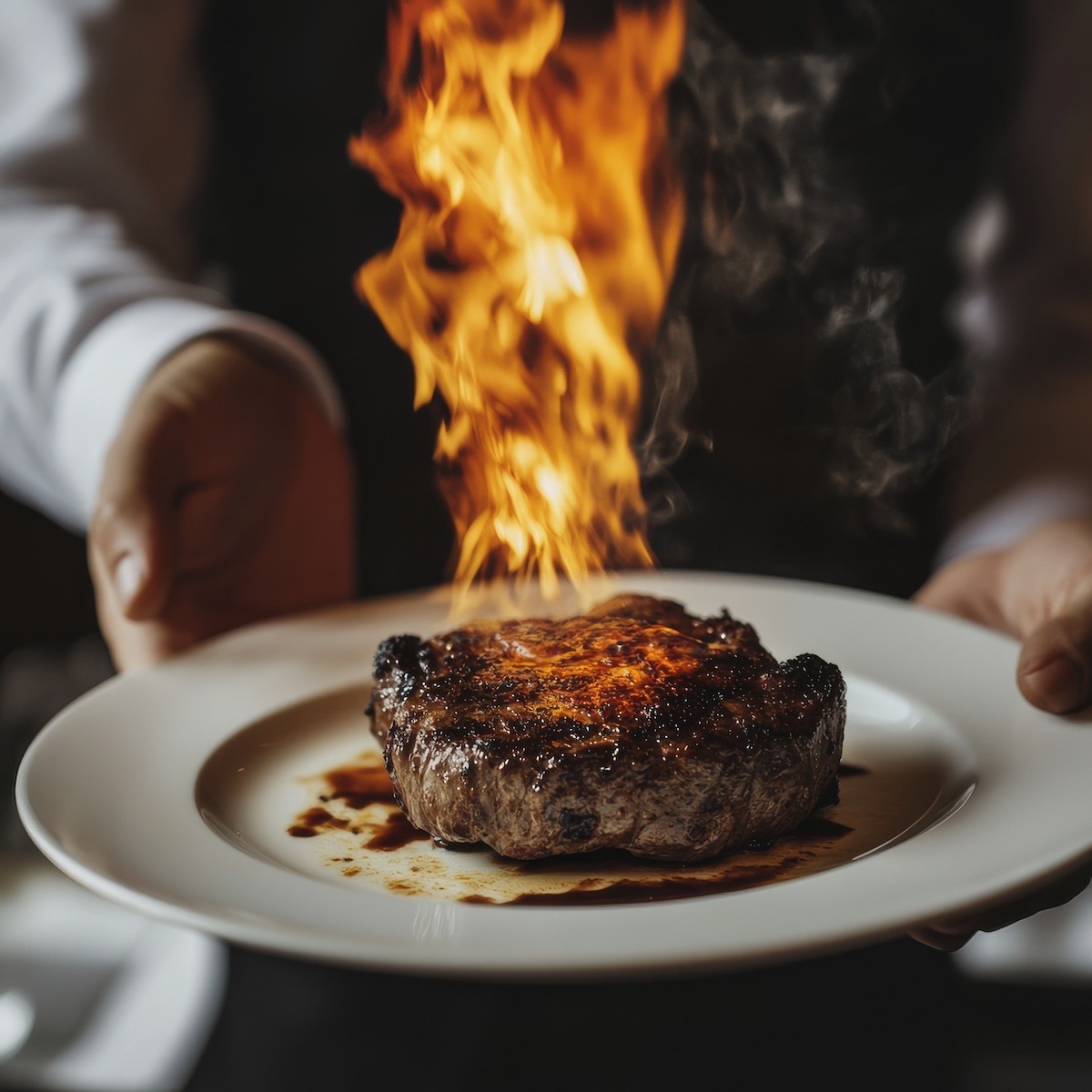

When to Send Food Back at a Restaurant: A Guide to Dining Etiquette
No one goes to a restaurant hoping to send their food back. Dining out is meant to be a treat, a break from the everyday routine, and a chance to enjoy a well-prepared meal without the hassle of cooking.
However, sometimes things don’t go as planned. Maybe the steak is overcooked, the pasta is under-seasoned, or an allergy request was overlooked. Whatever the issue, sending food back is often uncomfortable for diners. Many people fear being perceived as difficult, rude, or picky, even when their request is entirely justified.
However, speaking up is necessary to make sure your dining experience meets your expectations. Restaurants strive to satisfy their customers, and most would prefer to fix a mistake rather than leave a guest unhappy. Whether it’s a minor tweak or a complete redo, politely asking for a correction is important to maintaining the trust between the customer and the establishment.
In this post, I’ll explore when it’s appropriate to send food back, how to handle it respectfully, and what to expect from restaurant staff. After all, enjoying your meal shouldn’t be a source of stress – it’s all about finding the balance between satisfaction and courtesy.
Why Don’t We Send It Back?
Customers often hesitate to send food back, even when it’s not cooked to their expectations, due to social discomfort, fear of judgment, and concern about the consequences. Here are a few key reasons:
- Fear of Being Perceived as Difficult: Many diners worry that complaining about their food might label them as high-maintenance or fussy. They don’t want to create a scene or be viewed negatively by the staff or other diners.
- Concern for Restaurant Staff: Diners may feel sympathy for the busy kitchen and waitstaff, not wanting to add extra stress to their workload. They may also worry that their complaint could result in the server getting in trouble.
- Fear of Repercussions: Some customers have concerns about what might happen to their food if they send it back. Stories of disgruntled chefs or tampered meals can make them reluctant to request changes, even if the problem is legitimate.
- Social Anxiety: For some, making a public complaint is uncomfortable. They may prefer to avoid confrontation and quietly endure a subpar meal rather than draw attention to themselves.
- Expectation Management: Some diners may lower their expectations, deciding that the dish isn’t perfect, but it’s “good enough,” so they let it go rather than risk an awkward interaction.
When To Send It Back
- Health and Safety Concerns: If the food poses a risk to your health, it must be addressed immediately. This includes undercooked dishes (like raw chicken or pork), spoiled ingredients, or anything that could cause foodborne illness. If you’re allergic to an ingredient mistakenly included in your dish, sending it back for your safety is essential.
- Severe Cooking Errors: If your meal is drastically overcooked, undercooked, or far from what you ordered, it’s reasonable to ask for it to be corrected. For example, a well-done steak served rare or cold food that should be hot is an apparent reason to send a dish back.
- Wrong Order: When your dish is not what you ordered, whether it’s a different entrée or key components are missing or incorrect, it’s appropriate to ask the kitchen to fix the mistake.
- Foreign Objects: If you find a foreign object in your food, such as hair, plastic, or other contaminants, you must send the meal back. This compromises the quality and cleanliness of the dish.
In these instances, you are well within your rights to send the meal back, and most restaurants will prioritize fixing the mistake.
When Not To Send It Back
Avoid sending your food back at a restaurant in certain situations. These include:
- Minor Issues with Preference: If the issue is a minor personal preference, such as slightly less seasoning or a dish not being quite as hot as you like, it may not warrant sending the food back. Minor adjustments can often be made at the table, like adding salt or letting a dish cool down on its own.
- Misunderstanding of the Dish: If the food is prepared correctly but doesn’t meet your expectations due to a misunderstanding of the menu, it may be unfair to ask for a redo. For example, if you didn’t realize a dish was supposed to be spicy or served cold, it’s best to enjoy it as is rather than sending it back.
- Impatience or Timing: If you’re in a rush and don’t have time for the kitchen to correct the dish, sending it back may cause unnecessary stress. If the issue is minor, it might be better to politely address it with the staff and enjoy your meal as best you can.
- Aesthetics over Substance: If the dish’s presentation isn’t picture-perfect but the food is fine, sending it back might be overly picky. The appearance should matter less than the quality and taste.
It’s often better to manage expectations and enjoy the experience in these situations rather than risk creating unnecessary tension.
Example: Slow Kitchen
When your order takes excessive time to arrive at your table, it’s understandable to feel frustrated. However, handling the situation politely and effectively can affect the outcome. Here’s how you can approach it:
- Check-In with Your Server: If it’s been an unusually long time since you ordered, ask your server for an update. Approach the situation kindly, as delays can happen for various reasons. Your server can provide insight, whether it’s a kitchen backup, a forgotten order, or a complex dish that’s taking longer to prepare.
- Assess the situation: Please take into account the context. Is the restaurant particularly busy? Are there signs that the kitchen is overwhelmed, such as large parties or a full dining room? If so, a delay might be more understandable. Still, you are entitled to a reasonable wait time, so asking politely is fair.
- Evaluate Your Time: Let your server know if you’re pressed for time. They might be able to expedite your order, offer a complimentary appetizer, or provide an honest estimate so you can decide whether to stay or leave.
- Request a Manager if necessary: If your server cannot provide a satisfactory response or the delay is extreme, please ask to speak to a manager. They can often help resolve the situation by speeding up the process or offering compensation for the inconvenience.
Delays can be frustrating, but maintaining a calm and courteous attitude increases the chances of a favorable resolution.
Example: Appetizer Shows Up with Main Course
When your appetizer arrives simultaneously with your main course, it can be awkward and disrupt the dining experience. Here’s how to handle it:
- Communicate with Your Server: Let your server know you’d prefer to enjoy your appetizer before your main course. They may be able to hold the main course back or take it away temporarily until you’re ready. Sometimes, simply expressing your preference can help resolve the issue.
- Assess Your Appetite: If you’re not very hungry or if the timing of the dishes doesn’t bother you, you might choose to enjoy both courses together. Some diners prefer to savor everything at once, especially if they’re not planning on lingering over the meal.
- Take a look at the situation: If the restaurant is busy and the delay of one course could impact the freshness or quality of the food, it might be best to proceed with the meal as it is. In such cases, the staff often does their best to manage the flow of orders.
- Please ask a Manager if needed: If this happens frequently or is part of a larger issue with service, you should speak with a manager. They can address the situation and offer a discount or compensation for the inconvenience.
Example: Steak Is Overcooked

Sending Back an Overcooked Steak
If you order a steak cooked medium rare and it arrives medium well, here’s how you can handle the situation:
- Assess the situation: Before you take action, make sure the steak is cooked beyond medium rare. A medium-well steak typically has a firmer texture and is less pink in the center than a medium-rare steak.
- Communicate with Your Server: Inform your server that the steak is not cooked to your preference. You can say something like, “I ordered this steak medium rare, but it seems to be cooked more well done. Could you please have it corrected?” Most servers are trained to handle such situations and will want to ensure you’re satisfied with your meal.
- Request a Replacement: If the steak is not to your liking, ask for a new one cooked to the medium rare level you requested. The kitchen will usually be able to correct the issue quickly, especially if you address it early in the meal.
- Give Feedback: If you’re comfortable, provide constructive feedback to the server or manager about how the issue was handled. This can help improve future experiences for you and other diners.
- Consider Your Options: If you’re not in the mood to wait for a replacement or if the restaurant is very busy, you might choose to accept the steak as is and adjust your expectations. If the error is significant, you can also discuss a discount or complimentary item with the manager.
Handling the situation calmly and politely will generally lead to a better resolution and make sure that your dining experience remains positive.

How a waiter should NOT handle the situation.
Stats on Sending Food Back
There are some statistics and insights about sending food back in restaurants in the United States:
- Frequency of Complaints: According to a 2019 survey by the National Restaurant Association, about 15% of diners report sending food back at least occasionally. This indicates that while it’s not an everyday occurrence for most people, it is a notable issue for some diners.
- Reasons for Sending Food Back: A survey conducted by the food review site Yelp found that the top reasons for sending food back include incorrect orders (30%), food not meeting expectations (27%), and food that is not cooked properly (23%).
- Impact on Satisfaction: Research by the Cornell University School of Hotel Administration suggests how a restaurant handles complaints and returns can significantly impact customer satisfaction. When restaurants address issues effectively and courteously, it can lead to higher overall satisfaction and an increased likelihood of repeat business.
- Demographics and Preferences: A study published in the Journal of Hospitality Marketing & Management found that younger diners and those with higher dining expectations are more likely to send food back than older patrons or those with more lenient expectations.
These statistics provide a snapshot of how common it is for diners to send food back and highlight the importance of effective service and restaurant handling of such situations.
 Print
Print




